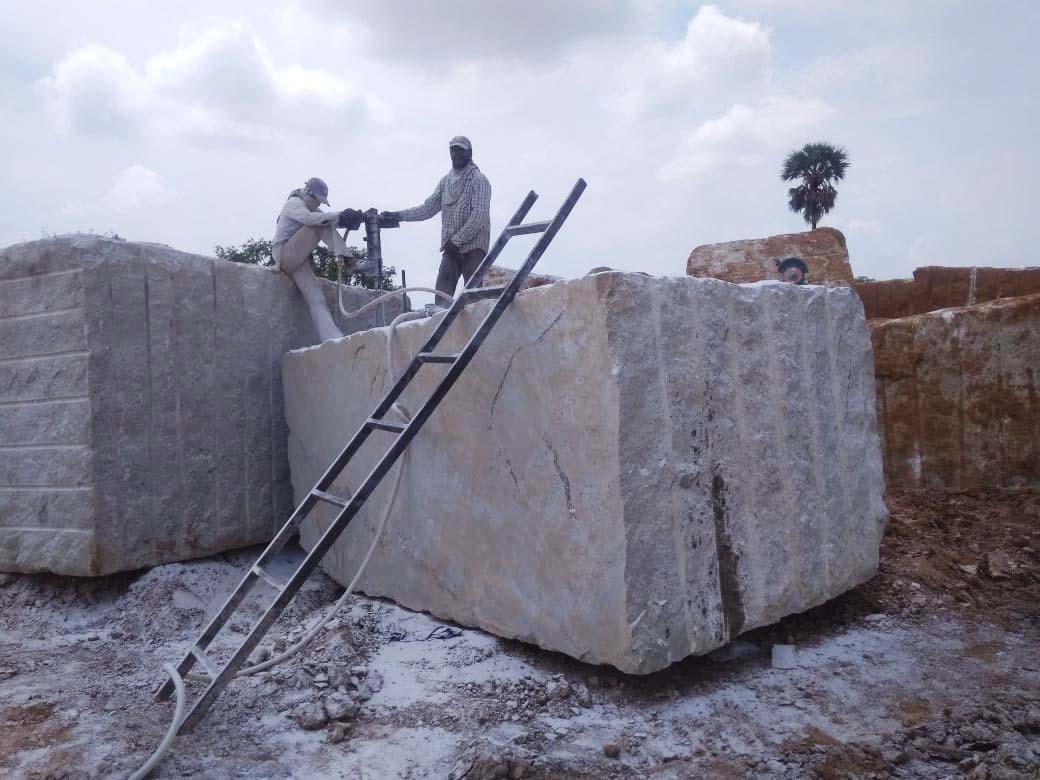Revealing the Mysteries of Granite Quarrying: Where Toughness and Style Meet
The world of granite quarrying is a realm where the raw stamina of nature merges with human virtuosity to create structures that stand the test of time with an air of sophistication. From the midsts of quarries to the thorough polishing in workshops, the process of transforming granite into architectural marvels is a complicated dancing of practice and technology. As we peer right into the depths of this ancient craft, we begin to uncover the covert complexities that shape the extremely essence of our developed atmosphere.
The Beginnings of Granite Quarrying
In the annals of architectural history, the origins of granite quarrying are shrouded in a tapestry of ancient craftsmanship and geological marvels. Dating back to ancient Egypt and Mesopotamia, the removal of granite from quarries noted the start of a trip that would at some point bring about the production of several of the globe's most famous structures.
Granite quarrying's roots can be traced to the experienced artisans who recognized the rock's longevity and visual charm. With a combination of primitive tools and large resolution, these very early quarry workers unearthed granite blocks that would certainly come to be the structure blocks of people.
As worlds developed, so did the techniques of quarrying granite. The Romans, renowned for their design expertise, established advanced approaches for removing granite to build monuments, holy places, and roadways that stood the test of time.
The heritage of these ancient quarrying practices remains to form modern style, with granite continuing to be a sign of strength and style in building projects around the world. (granite quarries in south africa)
Tools of the Quarrying Profession
The development of granite quarrying techniques from old people to modern times highlights the essential function played by the tools of the quarrying sell shaping the sector's methods. In old times, quarrying tools were rudimentary, commonly consisting of knives, hammers, and wedges made from materials like bronze or iron. These devices required substantial manpower and time to remove granite blocks from quarries.

Additionally, the introduction of pneumatic devices and high-powered equipment has actually dramatically minimized the physical labor needed in quarrying operations, improving worker safety and performance. As the quarrying sector remains to innovate, the tools of the profession continue to be at the leading edge of driving development and shaping the future of granite removal.
Removing Blocks of Granite
Making use of precision equipment and advanced strategies, the extraction of granite obstructs from quarries has become an innovative process in the modern-day quarrying market. Controlled blasting strategies are then used to break apart the granite right into manageable areas.

Polishing and Ending Up Methods
To achieve a perfect surface area on granite blocks, experienced craftsmens use a series of careful sprucing up and finishing methods. After the first extraction and shaping processes, the granite blocks undergo an extensive sprucing up stage to enhance their natural appeal and durability.
In addition her response to sprucing up, ending up strategies are applied to additional fine-tune the granite's look. These view website strategies might include flaming, developing, or brushing, each offering special appearances and coatings to suit different aesthetic preferences. Flaming, for circumstances, includes revealing the granite surface area to heats to create a rough, textured finish, ideal for outdoor applications where slip-resistance is vital. Refining, on the various other hand, supplies a matte coating that is smooth to the touch, excellent for interior kitchen counters and floor covering. By meticulously picking and using these brightening and ending up methods, craftsmens can transform raw granite blocks into beautiful pieces that showcase both strength and elegance.

Environmental Effect and Sustainability
With the growing emphasis on ecological consciousness in the market, granite quarrying techniques are progressively looked at for their effect on all-natural sources and long-term sustainability. Quarrying for granite can have considerable ecological implications. The removal procedure frequently includes making use of heavy machinery, nitroglycerins, and huge amounts of water, causing environment destruction, soil erosion, and water air pollution. Additionally, the transportation of granite from quarries to processing centers creates carbon emissions, even more adding to ecological destruction. granite quarries in south africa.
To reduce these effects and make sure sustainability in granite quarrying, market stakeholders are taking on numerous actions. Applying innovative modern technologies to lower power intake and water use, redeeming quarried land for eco-friendly reconstruction, and advertising accountable sourcing methods are some techniques being utilized. Additionally, certifications such as the Forest Stewardship Council (FSC) and the Management in Power and Environmental Style (LEED) assistance consumers identify eco-friendly granite items.
Final Thought
To conclude, granite quarrying is a procedure that requires specialized devices and techniques to remove blocks of granite and polish them to a high degree of finish. While the ecological impact of quarrying can be substantial, efforts are being made to boost sustainability methods in the sector. On the whole, granite quarrying is a delicate equilibrium in between utilizing the toughness and sophistication of this natural stone while minimizing its effect on the environment.
Comments on “Journeying Through Granite Quarries in South Africa: A Visual Odyssey”